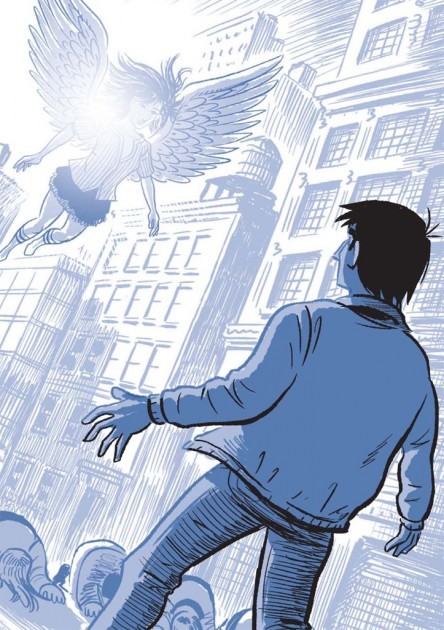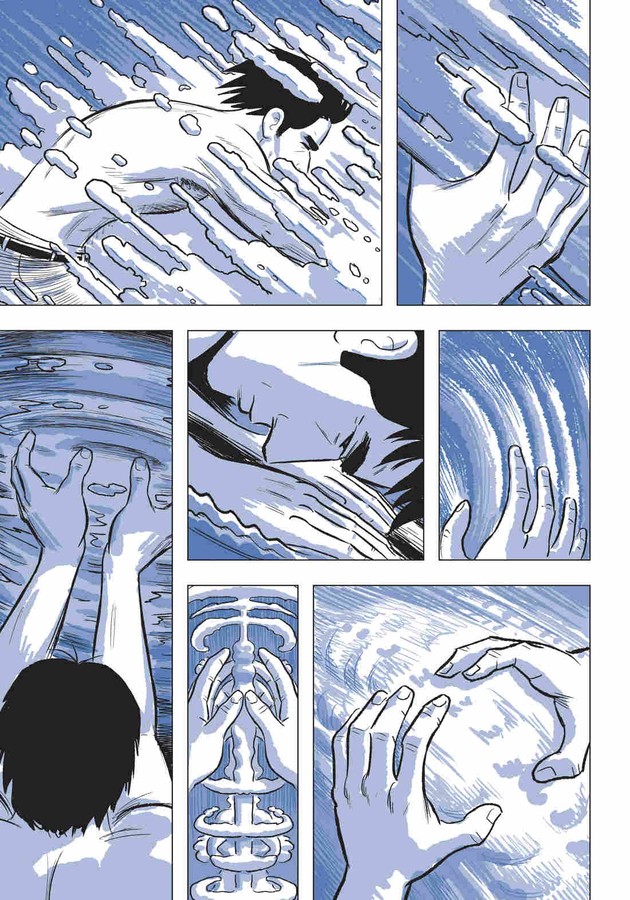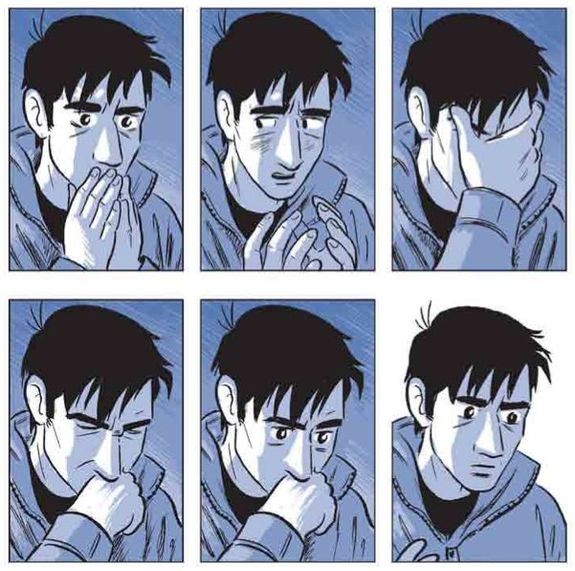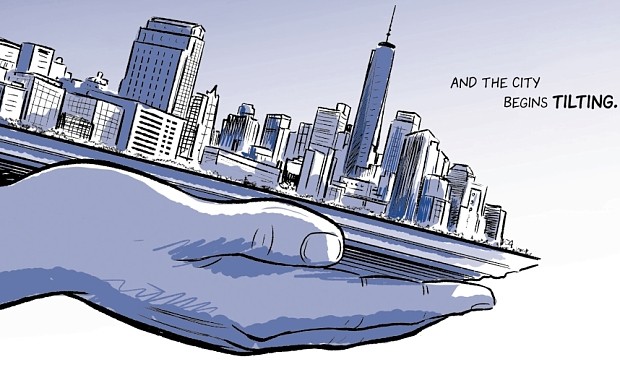The Sculptor, Scott McCloud. 2015, First Second Books. 500 pages, hardcover. (10 out of 10)
Every few years there’s a graphic novel that’s so good at what it does that it transcends the medium. There are many graphic novels that I would recommend to people who are already readers of comic books. I love my superhero comics and graphic novels, but I’ve also come to appreciate the great works of artists like Gene Luen Yang and Marjane Satrapi, Guy Delisle and Shaun Tan. And yet, for most of their books, I’d still only recommend them to fellow fans of that storytelling art. The last book I read that moved me to the point that I’d recommend it as a work of literature, not just as a graphic novel, was Craig Thompson’s “Blankets.” That was published in 2003, and I’ve been wondering what the next would be that impressed me as much. That next book is here, in Scott McCloud’s “The Sculptor.”

The 500-page hardcover tells a relatively simple story: underappreciated artist David Smith has a meeting with Death and is granted a wish – that he will give his life to make great art. The way that ends up playing out is that David is made aware of the exact date of his death, and until he dies, he has a superpower of sorts—he can sculpt any material with his bare hands. Marble, iron, concrete, it all molds in his hands like clay. This extraordinary talent, and David’s ticking clock, become a lens for us to examine our own lives.

We watch as David loses friends and family, as he finds love, as he comes to regard his life as a gift and his magical gift as a curse. The story is simple. It’s one that’s been told hundreds, thousands of times even. What makes this examination of love and life and sickness and death and family and friends move beyond the typical graphic novel fare and into what I’d deem “literature” is the thoroughness that David is given to explore these ideas. Much of that is in the dialogue, but even more of it is in the visuals. Too many graphic novels keep their stories grounded in reality to the point that it’s just a text with some pictures in it. Showing the story and telling the story both in the same panel.

McCloud lets David fear and grieve and imagine and work, and do so often on panels and even whole pages without words. He does talk, he talks a lot. But so much of “The Sculptor” is told through the images that the book would be incomplete if it were told in any other medium. Many of the pictures, the angles that we view David and New York City from, are cinematic. There are pans in and out, there are shots that crane in above the crowds, there are crowd scenes where you catch snippets of conversation – but I don’t want to see this made into a movie. It could be. It probably will be. But it won’t be as good as this book.

My favorite of the many themes in the book is about art. About finding your own muse, and your own creative act that will live on beyond you. McCloud may have been getting autobiographical with that—he’s achieved a meisterwerk here that will live on well past him. In an afterword, he writes about how David is him—but quite a bit younger. It’s books like this that inspire readers to do something. Will I ever have a crowning achievement? Will I be remembered? It’s these questions that haunt all of us, artists or not, and McCloud has found a beautiful way to both ask and answer the question.
It soars, but never without fear of falling
I’d say all the usual things here – I laughed out loud, I wept, it became a part of my life, I didn’t want to put it down – but none of that is quite right. I mean, all of those things happened. But there was also some pain with reading “The Sculptor.” It soared, but never without the fear of falling. It warmed, but always with the awareness that you could burn. Much like life itself, David Smith’s journey has real consequences. Magical meetings with Death aside, this was the most visceral book I’ve read in some time. I saw myself in “The Sculptor.” You will too.
